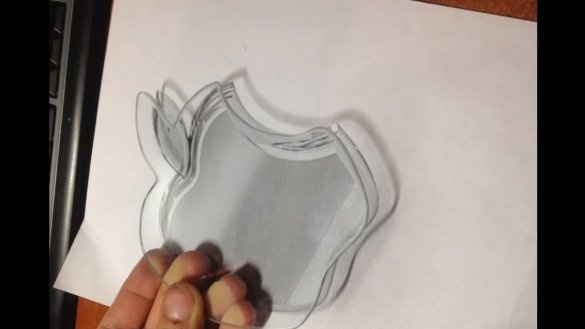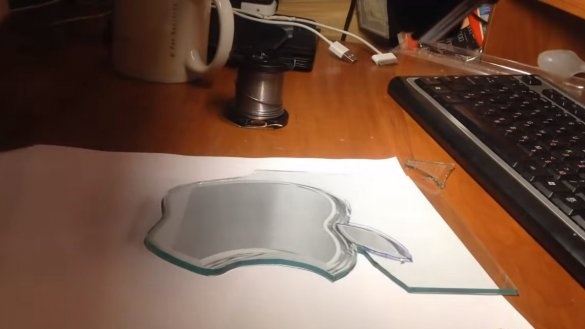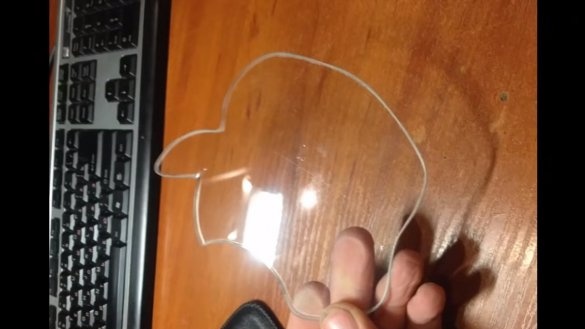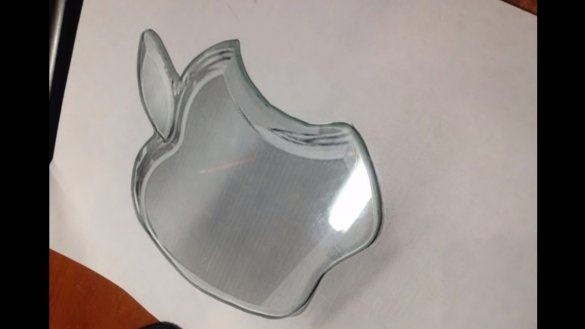I propose to consider alternative methods of cutting glass. The first option is cutting with a soldering iron, I personally checked this method, everything works fine. The glass breaks clearly behind the sting, you lead the sting along the glass and there is a crack behind it, it can be seen on the glass. So it turns out to cut out such details that not every master will cut with a glass cutter.
But the disadvantage of the method is speed, it happens that the crack stops and does not want to go any further. It is important to understand how internal stresses are distributed in the glass, this whole thing comes with experience. Of course, simpler figures can be conveniently and quickly cut with a glass cutter.
At the expense of the soldering iron, I started the experiment with a 25-watt soldering iron, you can work with it, but this is perhaps the weakest soldering iron that can only be used for such a thing. And the question is not so much the temperature as the heat capacity of the tip, the glass heats up for a long time from the tip, and the thermal contact is already so weak.
By the way, to improve thermal contact, the tip should be in the solder, then everything is faster. Then I tried with a 100-watt soldering iron, this unit is more than enough. They say it’s possible with a burner, but it didn’t work out, the heat capacity of the burner’s sting is scanty, it immediately turns black (cools down) when you touch the glass.
The two, the three are easily cut ... For a thick glass, a soldering iron is needed more powerful. According to the author, bottles can be cut like that, but I have not tried it.
He told the main thing, maybe he forgot, ask or watch the author’s video.
As for the second case - wire cutting. The ancient old-fashioned method works here, when the bottle was wrapped with rope, they set fire to the rope and the bottle then cracked along the heat line. Only here, instead of a rope, a red-hot wire, everything became simpler and faster. Good luck





